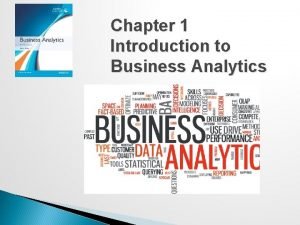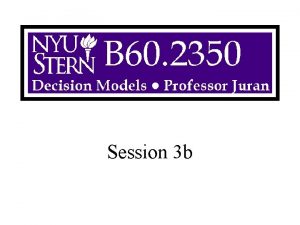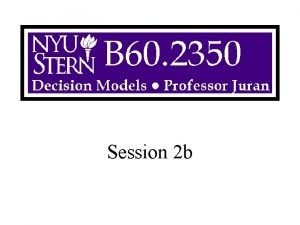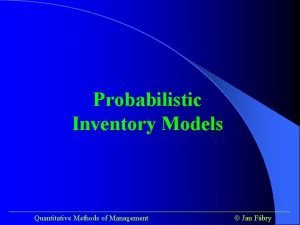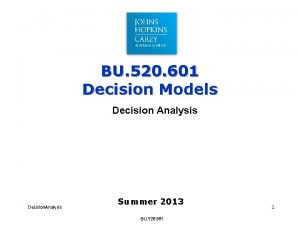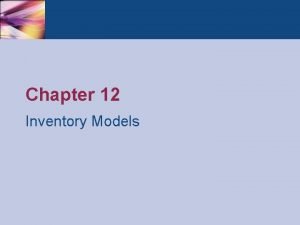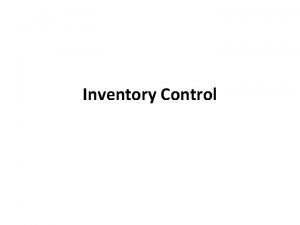Decision Science Chapter 10 Inventory Models Inventory a










- Slides: 10

Decision Science Chapter 10 Inventory Models

§Inventory: a stock or store of goods §Dependent Demand §A §C(2) §B(4) §H(2) §Independent Demand §E(1) §D(3) §F(2) §Independent demand is uncertain. Dependent demand is certain.

§A §C(2) §B(4) §H(2) §E(1) §D(3) §F(2) How many items of C, D, and E should be requested if Quantity of A = 100 units Answer Q of C = 100 x 2 = 200 units Q of D = 100 x 2 x 3 = 600 units Q of E = 100 x 4 x 1 = 400 units

Economic Order Quantity a) No. of orders = D/EOQ b) Order cost = No. of Orders x Order Cost c) Holding cost = EOQ/2 x Holding cost d)Total cost = Order cost + Holding cost

EOQ Example When Order cost = $ 2000 per order Semi-annual quantity = 8000 units (hint: semi-annual means twice a year) Holding cost = $ 400 per unit Find EOQ = 2 DCo Ch 2(16000)(2000) 400 = 400 units 13 -5

EOQ Example Based on the previous problem Find a) No. of orders = D/EOQ = 16000/400 = 40 orders b) Order cost = No. of Orders x Order Cost = 40 x $ 2000 = $ 80000 c) Holding cost = EOQ/2 x Holding cost 400/2 x $ 400 = $ 80000 d)Total cost = Order cost + Holding cost = $ 80000 + $ 80000 = $160000

Economic production Quantity

EPQ Example When Demand = 2, 500 units quarterly (hint: quarterly means four times a year) Set up cost = $ 100 Holding cost = $ 0. 5 per unit Daily demand rate= 60 units Daily production rate = 80 units Find EPQ EOQ = 2 DCo Ch (1 – d/p) 2(10, 000)(100) 0. 5 (1 – 60/80) = 4, 000 units 13 -8

Assumptions of Basic EOQ Model w Demand is known with certainty and is constant over time w No shortages are allowed w Lead time for the receipt of orders is constant w Order quantity is received all at once

Inventory Order Cycle Inventory Level Order quantity, Q Demand rate Average inventory Q 2 Reorder point, R 0 Lead time Order placed receipt Time 13 -10
 Objectives of decision making
Objectives of decision making Investment decision financing decision dividend decision
Investment decision financing decision dividend decision My favourite subject is c
My favourite subject is c What is the difference between model and semi modal
What is the difference between model and semi modal Using recursion in models and decision making
Using recursion in models and decision making Using functions in models and decision making
Using functions in models and decision making Decision models in business analytics
Decision models in business analytics Decision variables
Decision variables Decision models
Decision models Decision table and decision tree examples
Decision table and decision tree examples Probabilistic inventory models
Probabilistic inventory models






